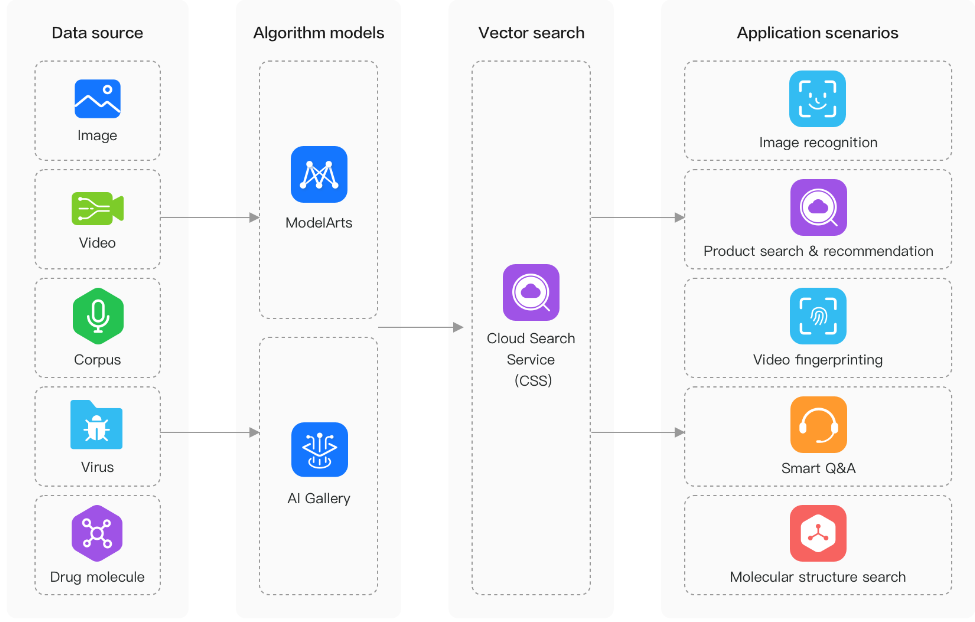Scenarios
CSS can be used to build search boxes for websites and apps to improve user experience. You can also build a log analysis platform with it, facilitating data-driven O&M and business operations. CSS vector search can help you quickly build smart applications, such as AI-based image search, recommendation, and semantic search.
Site Search
CSS can be used to search for website content by keyword as well as search for and recommend commodities on e-commerce sites.
- Real-time search: When site content is updated, you can find the updated content in your search within minutes, or even just seconds.
- Categorized statistics: You can apply search filters to sort products by category.
- Custom highlight style: You can define how the search results are highlighted.
All-Scenario Log Analysis
Analyze the logs of Elastic Load Balance (ELB), servers, containers, and applications. In CSS, the Kafka message buffer queue is used to balance loads in peak and off-peak hours. Logstash is used for data extract, transform and load (ETL). Elasticsearch retrieves and analyzes data. The analysis results are visualized by Kibana and presented to you.
- High cost-effectiveness: CSS separates cold and hot storage, and decouples computing and storage resources, achieving high performance and reducing costs by over 30%.
- Ease of use: Perform queries in a GUI editor. Easily create reports using drag-and-drop components.
- Powerful processing capability: CSS can import hundreds of terabytes of data per day, and can process petabytes of data.
Database Query Acceleration
CSS can be used to accelerate database queries. E-commerce and logistics companies have to respond to a huge number of concurrent order queries within a short period of time. Relational databases, although having good transaction atomicity, are weak in transaction processing, and can rely on CSS to enhance OLTP and OLAP capabilities.
- High performance: Retrieve data from hundreds of millions of records within milliseconds. Text, time, numeric, and spatial data types are supported.
- High scalability: CSS can be scaled to have over 200 data nodes and over 1000 columns.
- Zero service interruption: The rolling restart and dual-copy mechanisms can avoid service interruption in case of specifications change or configuration update.
Vector Search
When you search for unstructured data, such as images, videos, and corpuses, the nearest neighbors or approximate nearest neighbors are searched based on feature vectors. This has the following advantages:
- Efficiency and reliability: The Huawei Cloud vector search engine provides ultimate search performance and distributed disaster recovery capabilities.
- Abundant indexes: Multiple indexing algorithms and similarity measurement methods are available and can meet diverse needs.
- Easy learning: CSS is fully compatible with the open-source Elasticsearch ecosystem.

Feedback
Was this page helpful?
Provide feedbackThank you very much for your feedback. We will continue working to improve the documentation.






